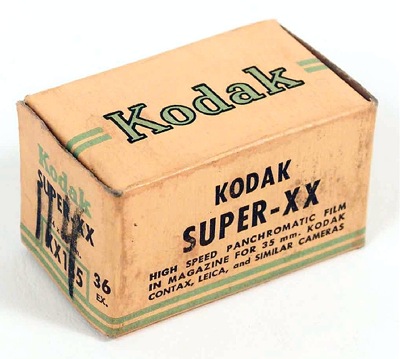 [This four-part Guest Post by military historian Charles Herrick results from the Capa D-Day Project team’s determination to consider all possibilities, follow all leads, answer all pertinent questions and, to the extent possible, tie up any remaining loose ends.
[This four-part Guest Post by military historian Charles Herrick results from the Capa D-Day Project team’s determination to consider all possibilities, follow all leads, answer all pertinent questions and, to the extent possible, tie up any remaining loose ends.
In this series, Herrick pursues further the question of whether LIFE staffer Bob Landry, assigned to cover the attack on Utah Beach, landed there on D-Day or, instead, on D+2. In all fairness, Landry himself never claimed to have landed on the morning of the invasion. The assumption that he did land on D-Day rests on inference drawn from various accounts by John Morris of LIFE magazine and a single sentence in a post-D-Day radio broadcast by CBS correspondent Larry LeSueur, a member of Edward R. Murrow’s broadcast team.
I asked Herrick to reconsider the photographs Landry made during the early days of the invasion, as well as Morris’s inconsistent accounts of Landry’s role and LeSueur’s broadcast, comparing these with military documentation from the archives.
The concluding Part 4 of his analysis appears below; click here for Part 1, here for Part 2, and here for Part 3. — A.D.C.]
•
Landry and LeSueur, Reconsidered (4)
by Charles Herrick
•
Mixed Up at Sainte Marie-du-Mont
… Since dawn on D-Day, fragments of airborne units had been fighting in the vicinity of this village, with German artillery batteries getting overrun at Holdy and Brecourt Manor. In Sainte Marie-du-Mont itself, however, German resistance proved far stronger, and the battle for the town raged until mid-afternoon, when Col. James Van Fleet’s 2nd Battalion, 8th Infantry Regiment arrived from Pouppeville to assist the paratroopers.
Larry LeSueur’s broadcast included this supposedly eyewitness account of his own arrival in Sainte Marie-du-Mont:
“Here we met the paratroops. They were fighting a steep battle with the Germans. While I watched one paratrooper in hand-to-hand combat with a German, a shot rang out from a church steeple, and both the paratrooper and the German fell together — killed by a German bullet from that church. Other paratroopers immediately turned their attention to the church steeple, tossing grenades as high as they could.“
Frankly, the idea that LeSueur himself was far enough forward to witness hand-to-hand combat (an amazingly rare event in modern battle, the imaginations of Hollywood and broadcasters notwithstanding) is only slightly less absurd than his subsequent sentence claiming the paratroopers then started throwing grenades up at the steeple. The standard U.S. hand grenade then weighed 1 pound, 4 ounces, and the act of attempting to throw it through a narrow window 50 feet up the steeple seems more than a bit absurd, especially since the inevitable miss would have sent that grenade falling back to explode on the man who threw it.
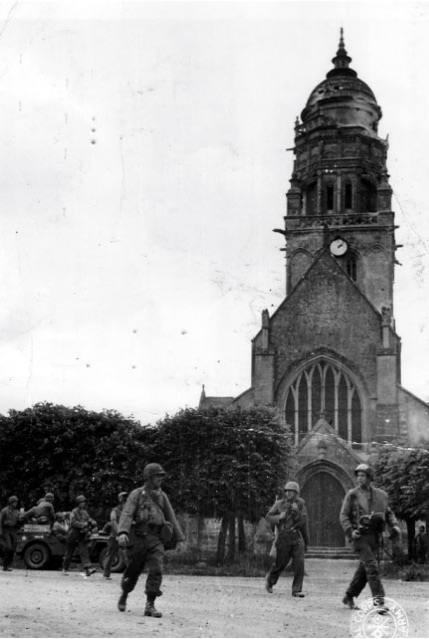
A view of the church of Notre Dame at Sainte Marie du Mont, taken shortly after D-Day. Photographer unknown.
It is little wonder that the authors of The Murrow Boys toned down this nonsense. In that version the hand-to-hand combat was quietly omitted, and the incident instead featured a paratrooper who was shot while taking the surrender of Germans as they emerged from a house. The shot supposedly still came from the steeple, but the grenades were lobbed at the church, not up at the steeple.
Even this less sensational version poses a problem. Earlier that day (mid-morning of D-Day), after the artillery battery at Holdy had been overrun, the paratroopers there suspected they were being observed by German spotters in the steeple of the church in Sainte Marie-du-Mont. They manned one of the captured German artillery pieces, and with their second shot hit the steeple. They had no way of knowing the steeple was already occupied by American paratroopers. LeSueur’s assertion that the steeple was still in German hands some six hours later is, therefore, unlikely at best.
In fact, this once again smacks of a badly mangled secondhand account of an actual incident. During the airdrops the night before, Private First Class Ambrose Allie was captured shortly after he landed on a roof in Sainte Marie-du-Mont. At dawn, he and two other captured paratroopers were led out and pushed against a wall for execution. One popular story has a burst of American gunfire from the same church steeple (Sainte Marie-du-Mont had only one church) killing or scattering the Germans, thus saving Allie and his comrades.
With that dubious anecdote, LeSueur’s D-Day account essentially came to a close. While some details were generic enough to apply to Utah Beach, others were clearly wrong. Highly newsworthy events, such as the linkup with Major General Taylor, were completely omitted. Other anecdotes (such as circling all night in the Channel, the stiff-necked German officer on Utah Beach, and the combat in Sainte Marie-du-Mont) were clearly garbled secondhand stories. And the few concrete, verifiable details paint scenes that he would have observed not on D-Day but sometime later.
After assessing all this, I find it highly improbable that LeSueur landed on D-Day. Certainly the details he himself provided of his landing cast significant doubt on that possibility. As a result, it is my considered opinion that LeSueur is far from a reliable source to use in verifying his own landing on D-Day, much less Bob Landry’s. In fact, if they did land together (or from different LCTs at roughly the same time), LeSueur’s account actually reinforces the hypothesis that the two of them stepped ashore at least on D+1, and more likely on D+2. That, coupled with the fact that the Utah Beach press support team and its accompanying correspondents were delayed until D+2, reinforces my original conclusion: In all probability, Landry and LeSueur came ashore on D+2 with that press support team, and immediately headed inland, toward the front.
[Editor’s note: If he did indeed land on D-Day and move inland following the troops and the action, Landry would have had no good reason to return to the beachhead on June 7 or 8, when he must have made the image below. Both the battlefront and press headquarters had moved miles inland by that time. — A.D.C.]
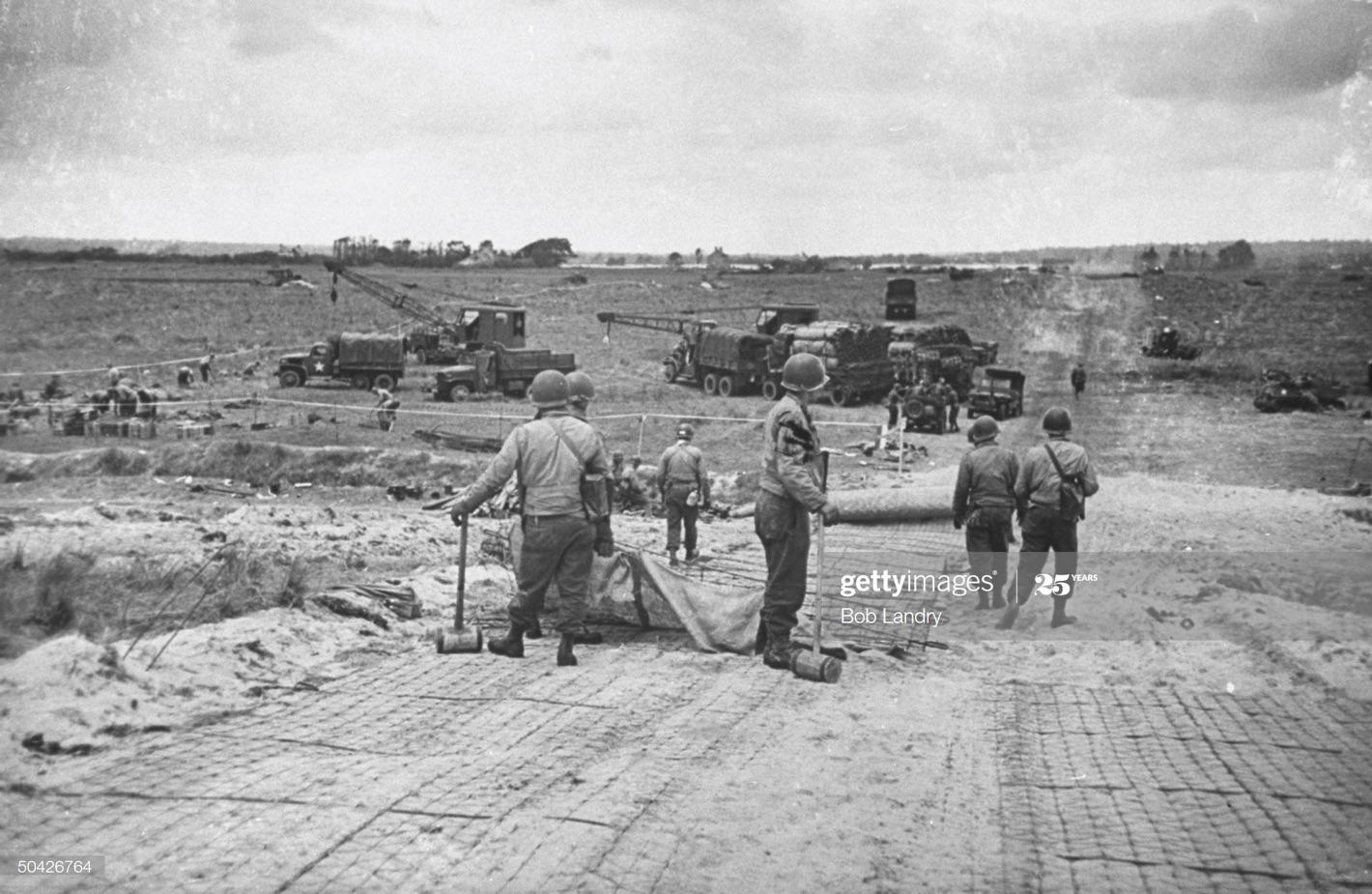
Figure 17. The only known picture by Bob Landry of Utah Beach, probably on June 8, 1944. Engineers are in the initial stages of developing an exit from the beach. Note the wire mesh they have pegged into the sand to provide traction for wheeled vehicles.
•
Butler and Smith
E. K. Butler (Associated Press) had been appointed the head of the still photo pool for D-Day. In an article published in the 18 November 1944 issue of Editor & Publisher magazine he detailed the preparations for photographing D-Day. He noted that the pool coordinator, Charles Smith (INP), had told the pool photographers “that it would be okay if any of them saw a chance to rush back to London with their own negatives and thus beat the official Army courier system.”
The still photo pool supporting the First U.S. Army consisted of Robert Capa, Bert Brandt (Acme Newspictures), Peter Carroll (AP), and Landry. Capa and Brandt heeded Smith’s advice, arriving with their D-Day film in Weymouth on the morning of 7 June. Carroll did not, and we know why; the VII Corps planners had not factored press correspondents and photographers into the Utah Beach landing tables — they had to be shoehorned in at the last minute. The best that could be done for Carroll, for example, was to put him aboard a Landing Craft, Infantry with follow-on elements of the 101st Airborne Division.[1] He didn’t touch ground on Utah Beach until shortly after noon on D-Day,[2] having missed the first critical hours of the assault. By the time he waded ashore, both Brandt and Capa were already back aboard their attack transports with their landing photos.
•
So what then of Life photographer Bob Landry? Did he land with Col. Van Fleet, but ignore Smith’s advice to personally rush his film back to the UK? Did he really decide to trust time-sensitive and priceless pictures of the assault to an ad hoc (and patently inadequate) courier system, only to have it lost overboard or disappear mysteriously while in the Ministry of Information’s custody once it reached England?
That doesn’t sound at all like the experienced combat photographer that Landry was. He knew better. After covering the amphibious assault on Sicily, he had personally carried his films all the way back to the United States to ensure their publication. He was fully aware of the infinite series of foul-ups that plague every amphibious assault. I firmly believe that if he had arrived at Utah Beach on D-Day, he would have hand-carried his film back to the UK, just like Brandt and Capa.
It is my opinion that the only thing that could have kept a photographer of Landry’s caliber from getting his D-Day photos to London was if he hadn’t been able to be present on 6 June. Given the Army’s last-minute transport assignments of Utah Beach correspondents, and Peter Carroll’s slot far back in the landing tables, it isn’t likely that fellow still photo pool photographer Landry (along with correspondent LeSueur) would have been given front-row seats with Col. Van Fleet. It’s far more likely that they were slotted to accompany the Utah Beach press support team, and missed D-Day when the LCT carrying them aborted its trip due to an onboard fire.
And I think it is important to remember that we have no direct evidence that Landry did land on D-Day. It isn’t even clear what unit he was supposed to accompany. The SHAEF 24 April 1944 memo identifying correspondent assignments (which was probably revised significantly by D-Day) merely shows Landry supporting the U.S. First Army. Lt. Barney Oldfield (of the SHAEF Public Relations Division) noted that Landry was originally slated to accompany the paratroopers (along with Capa and LeSueur), but he too had to be reassigned when he did not make it to the jump training course. (Oldfield did not mention Landry’s substitute assignment, nor the day on which he landed.)
•
John Morris, Landry’s putative boss, was just as unhelpful. As discussed earlier, Life’s 26 June 1944 issue, which hit the newsstands on June 19, contained a summary of Landry’s invasion activities (no doubt written by Morris). It merely stated, “Landry had gone in with American troops to Ste. Mere Eglise.” That brief sentence notably failed to mention when Landry went ashore. Morris’s comment could imply anything from jumping in with the paratroopers (which Landry did not do) to accompanying the seaborne 4th Division’s troops as they relieved the paratroopers at Sainte-Mère-Église — which they did on D+2 (not so coincidentally, the same day the Utah Beach press support team and most of its correspondents landed).
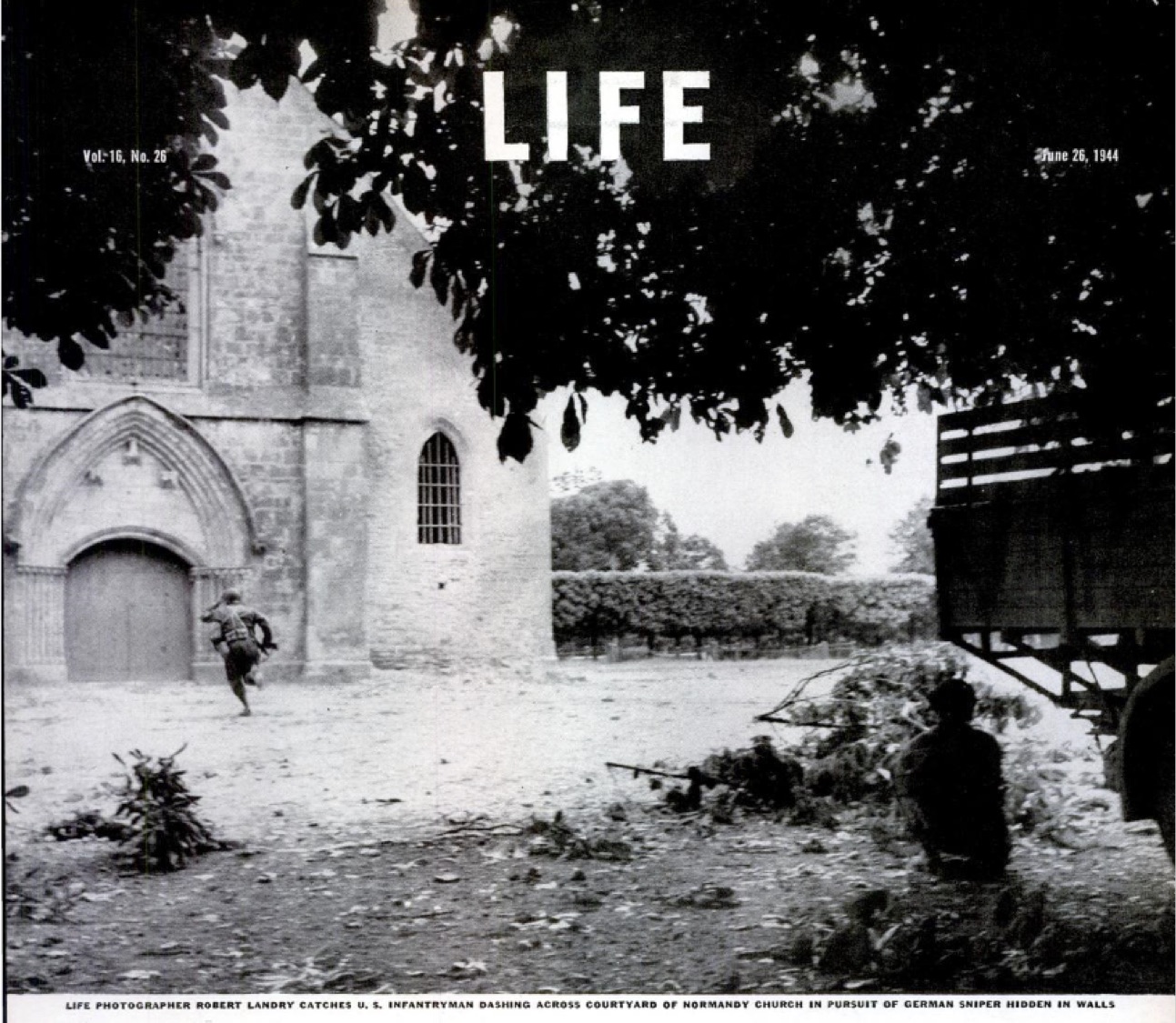
Figure 20. Bob Landry, infantry mopping-up action, Sainte-Mère-Église, LIFE, June 26, 1944 (detail).
•
As a result, the challenge consists not so much in proving that Landry did not come ashore on June 6 but in finding evidence that he did land on D-Day. So far, the evidence for a D-Day landing is scant, error-prone, and far from convincing.
Having said that, my conclusion that Landry landed on D+2 is merely the most likely alternative, based on my analysis of the available evidence. While I believe the evidence supports this conclusion, I certainly cannot claim it to be a fact. Every version of history depends on the evidence available, and so this topic remains subject to reconsideration if and when additional evidence becomes available. Until then, readers may decide for themselves what seems most likely.
•
[Editor’s note: Long story short, no credible evidence places LIFE photographer Bob Landry on Utah Beach on D-Day. Important to emphasize here that he never claimed on the record to have arrived there on that day. Certainly none of his published invasion photographs got made on June 6.
We have only a passing and self-contradictory assertion by the chronically unreliable and compromised John Morris, then the London-office assistant picture editor for LIFE, and an equally brief and improbable claim from CBS broadcast correspondent Larry LeSueur, to suggest otherwise. To the contrary, all hard evidence points to Landry and LeSueur crossing the Channel in the same convoy and landing two days later, on June 8. It would appear that LeSueur, under pressure to produce something about D-Day itself, folded several specific D-Day incidents he’d heard about from others into a quick generic narrative, in the process implicating Landry as an unsuspecting witness to this colorful pastiched tale.
Furthermore, per Herrick’s previous investigation, no extant evidence corroborates the myth that any D-Day still and motion-picture film by Landry and others got dropped into the water or otherwise lost somewhere between the invasion front and its UK destination. This makes it likely that the earliest Landry photos of the Normandy front were made as soon as he arrived on Utah Beach, two days after the beachhead got established and the troops were digging in for the long haul.
•
So that’s where the documentation and other evidence leads us. It’s not conclusive, but it’s the Occam’s-razor explanation for the absence of any Landry material in the D-Day issue of LIFE, as well as for a variety of otherwise peculiar discrepancies in the LeSueur versions.
From the evidence of his WWII reportage for LIFE, Landry was a dedicated, extremely qualified, thoroughly professional photojournalist and a courageous war photographer. If he didn’t land on Utah Beach on D-Day, as scheduled, that certainly wasn’t of his own choosing. We have no first-hand account of his experiences on the Channel crossing or the landing on Utah Beach, nor any record of his stint in Normandy beyond the pictures he made and the stories he filed with LIFE. Certainly he never claimed on the record to have landed on June 6. Clearly he was no braggart or self-aggrandizer; his widow reported in our interview that he preferred not to talk about the war.
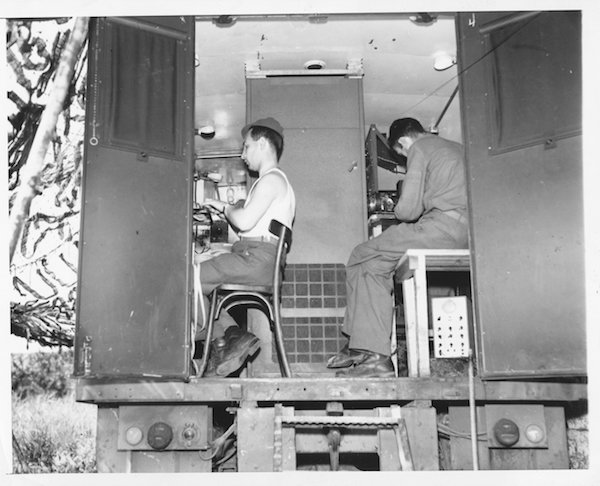
“France–Operating from Normandy under the auspices of the US Army since D-Day plus 5 is this Press Wireless transmitter. Here, a tape-puncher (left) and technician are hard at work in the transmitter truck. (Credit–WP–Acme Photo by Bert Brandt, War Pool Correspondent) 7/22/44” (Caption on back of press print.)
•
I see no reason to believe that, at the time of LeSueur’s filing his CBS story on June 19 (D+13), Landry had any idea that his colleague and friend had involved him in a fabrication, in which case he had no way of preventing that. The transmitter that LeSueur used was positioned within the press camp, but its compact size would have precluded Landry sitting in as an auditor (see image above).
If and when he later came across the recording or text of LeSueur’s dispatch (not a given), he would have faced a dilemma: either blow the whistle on his friend, causing all kinds of uproar, or keep quiet and let it pass as essentially harmless and simply part of “the fog of war.” To my way of thinking, it does Landry no discredit, personally or professionally, to assume that he chose the second path, even if that required him occasionally confirming, off the record, and only when asked, that he had landed on D-Day (also not a given).
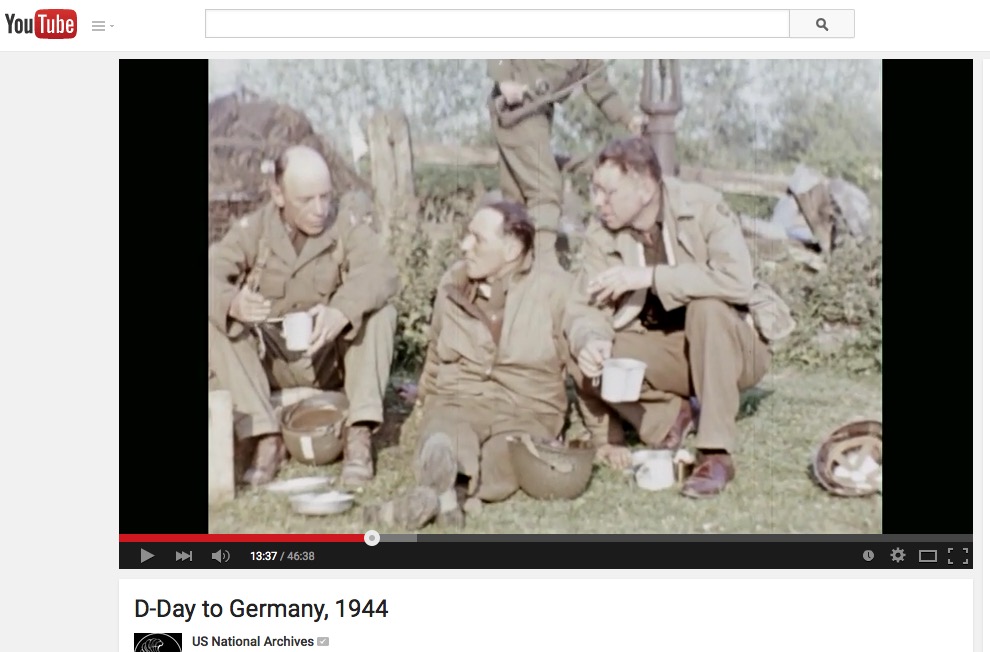
Bob Landry (r), with shoes, Larry LeSueur (ctr), Sainte-Mère-Église, as seen in Jack Lieb’s film, “D-Day to Germany, 1944.”
•
For those who have made their way through it, Herrick’s analysis may have told them much more about military aspects of the invasion than they anticipated or really wanted to know. Certainly it had that effect on me. Yet I make no apologies for publishing it here as part of this project. It demonstrates the importance of understanding the complex context in which any photojournalist operates when on assignment — in this case, the combination of the vast military operation as conceived by SHAEF and the actual military situation on the ground, whose logistics and unanticipated developments had a determining effect on this distinguished war photographer’s coverage of the invasion.
To put this episode in an even broader context, it exemplifies the real-life equivalent of what in literature we call the unreliable narrator. The field of historiography distinguishes between the chronicler — often present at the event under consideration, or in contact with those who participated in and/or witnessed it, shortly after it occurred — and the historian, who comes to the event well after the fact and for whom the inevitably biased and partial and otherwise flawed chronicles serve as raw material for a relatively objective and balanced overview that also includes documents and other hard evidence, noting and attempting to reconcile the discrepancies between all available primary sources.
The unreliability of eyewitness testimony has, at long last, become established in the U.S. legal system. (Click here for a statement on that subject from the American Psychological Association.) Blind faith in the veracity and credibility of first-hand accounts therefore constitutes a fundamental flaw in the practice of historianship, as exemplified by the work of Richard Whelan, Capa’s authorized biographer. Uncritical reliance on the work of such historians, and their citation as authoritative sources, compounds the inevitable, inherent errors of that approach.
Were it not for the two fragmentary mentions by Morris and LeSueur, both of them demonstrably unreliable narrators, along with the discredited yet persistent “Legend of the Lost Film,” we would not find ourselves weighing whether Bob Landry reached Utah Beach on D-Day. The military documentation all sits on one side of the scale; his own reportage, beginning as it does on June 8, corroborates that evidence. Absent the future discovery of any photos of his self-evidently made on June 6, it seems reasonable to conclude that Landry — and LeSueur — spent D-Day adrift in the English Channel. — A.D.C.]
Notes:
[1] Pete Carroll came in on LCI(L)-5 with Wes Haynes and Jack Lieb. Lieb’s motion-picture film shows Carroll aboard LCI(L)-5 and wading ashore on Utah Beach. (Later clips also show Landry and LeSueur inland.)
[2] Per the Action Report of LCI(L)-5.
•
Text copyright © 2022 by Charles Herrick. All rights reserved.
•
(For an index of links to all posts in this series, click here.)
•
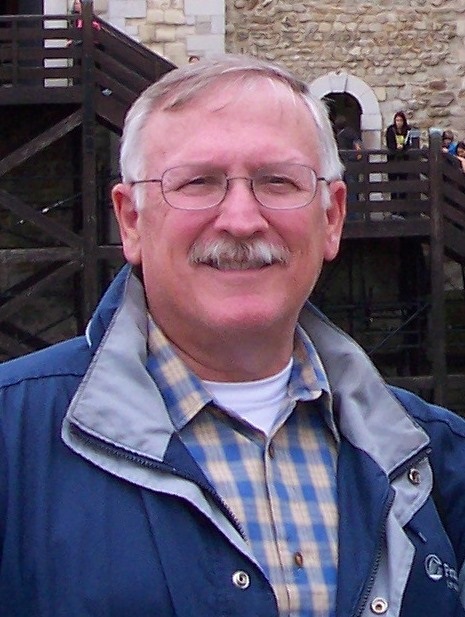 Charles Herrick joined the U.S. Army in 1970 and graduated from the U.S. Military Academy at West Point in 1974. Commissioned in the Infantry, he earned the Ranger tab and Master Parachutist’s wings. He served in a variety of positions from company grade officer to the Pentagon. He earned the Combat Infantryman’s badge while assigned as the Operations Officer of the 193rd Infantry Brigade in Panama in 1989, and later graduated from the U.S. Army War College.
Charles Herrick joined the U.S. Army in 1970 and graduated from the U.S. Military Academy at West Point in 1974. Commissioned in the Infantry, he earned the Ranger tab and Master Parachutist’s wings. He served in a variety of positions from company grade officer to the Pentagon. He earned the Combat Infantryman’s badge while assigned as the Operations Officer of the 193rd Infantry Brigade in Panama in 1989, and later graduated from the U.S. Army War College.
Since retiring from the Army in 1996, Herrick has continued to work on defense issues as a contractor in East Asia, Latin America, the Balkans, Africa and Central Asia. He holds an MBA from the University of California at Los Angeles. He lives in California with his wife, where he pursues his passion for military history. To contact Charles Herrick, click here.


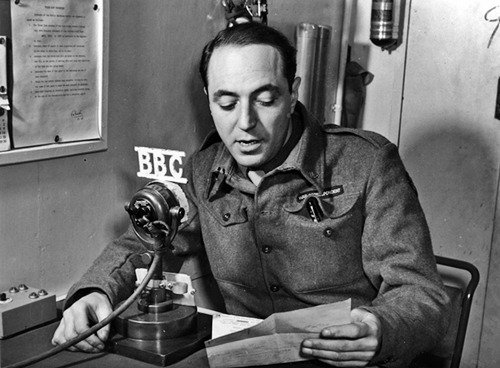
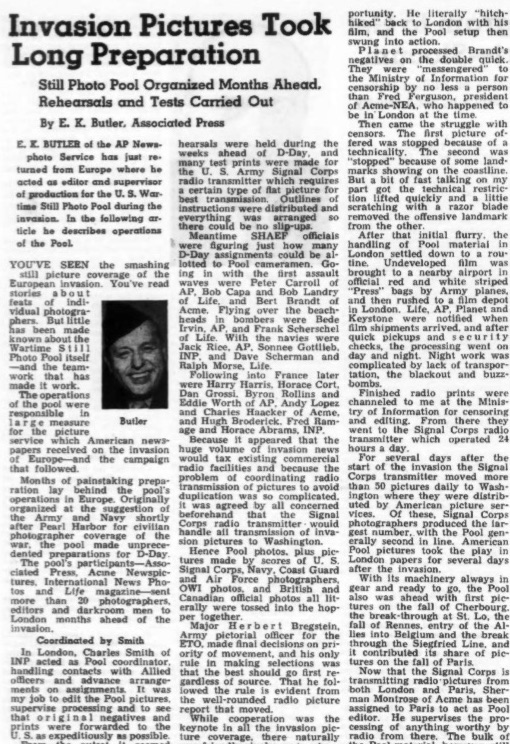
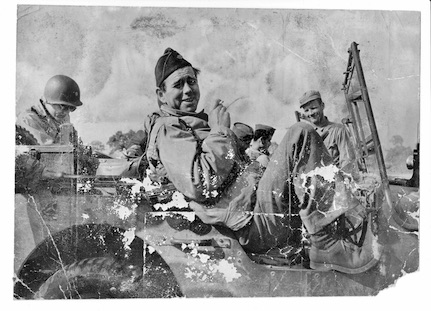
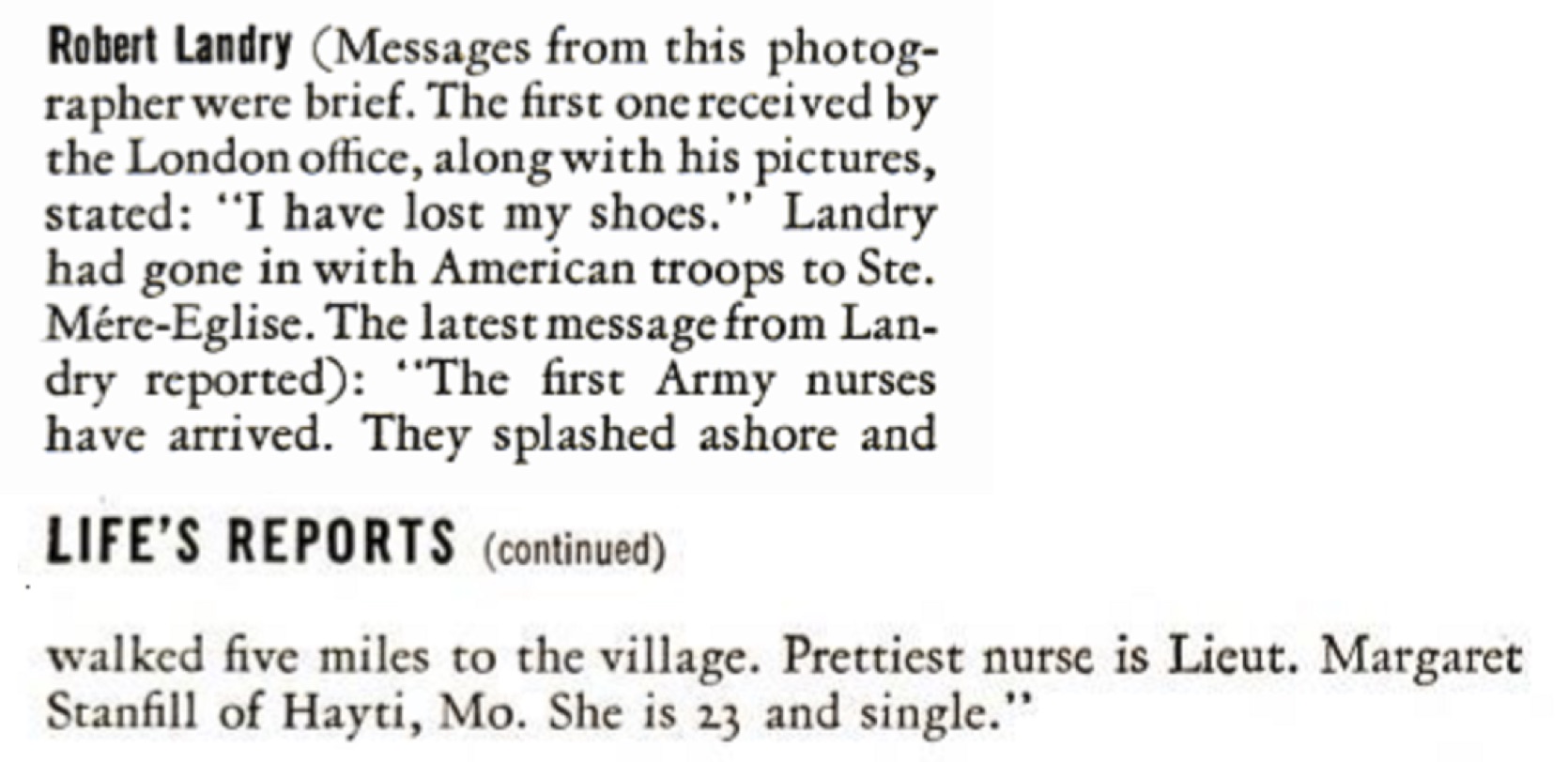
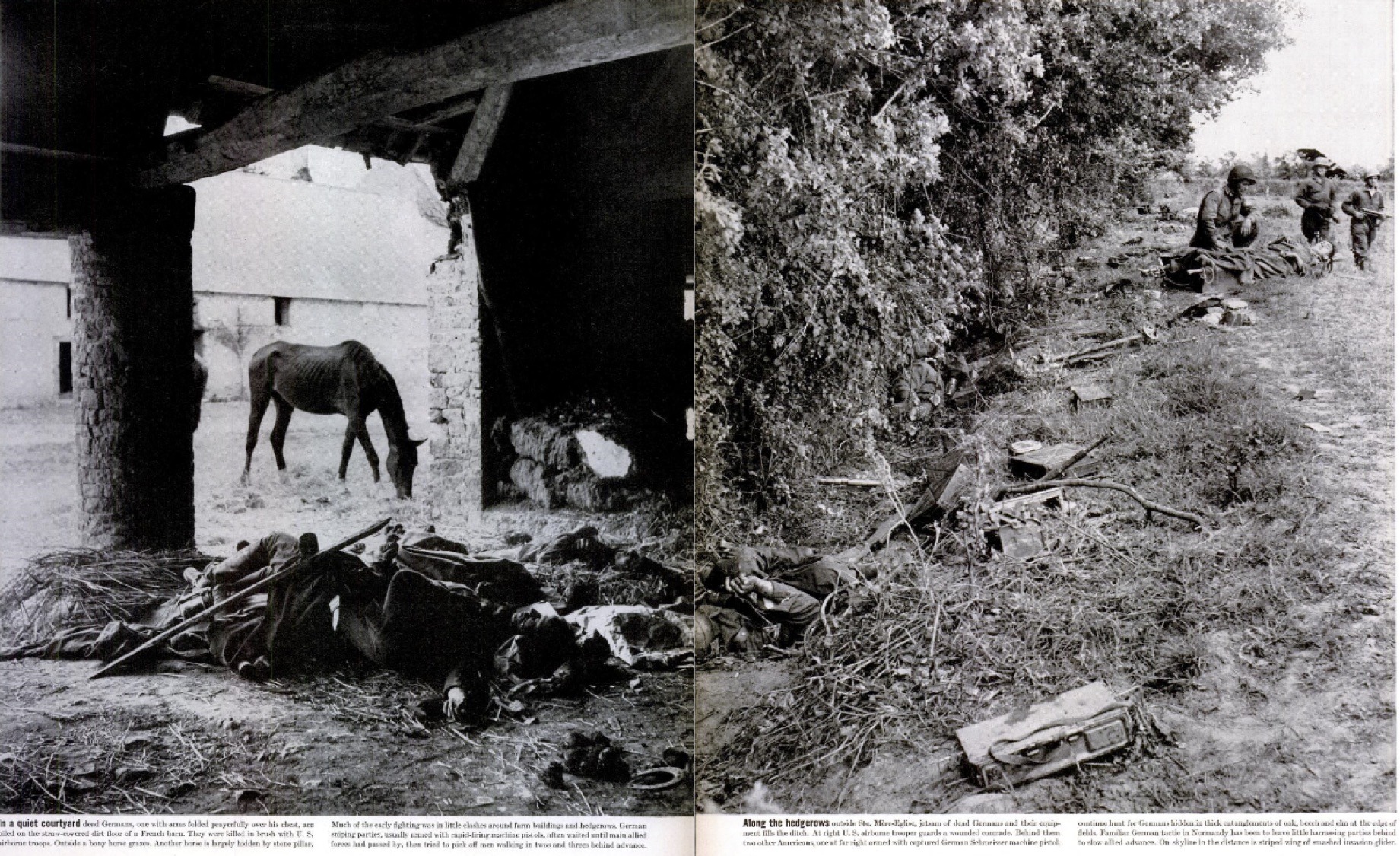




Thanks for this once again detailed and thorough analysis. As war information and misinformation are being bandied about daily, it’s good to get some perspective on how these issues have been handled (and mishandled) in the past.
Why the hell are you people so determined to hurt so many people’s reputations? West Point grads ain’t all that as we who actually served in Vietnam knew. ow the hell did an officer win a CIB? His personal history is as questionable as those he seeks to denigrate. Contractor? Hahahahah. Anybody who has sever served knows that that means. And, yours Coleman? What did you ever do in the military? You’re nothing but a washed up old critic who is trying to take money out of people’s pockets for nothing. Leave 80 year old history to those who were actually there and did their best. Even Robert Capa… if you’d ever been in combat you know that he has nothing to apologize for. But, you haven’t so you don’t know.
Nevertheless, they persisted.
If you prefer myths and self-aggrandizing stories, then this may not be the site for you. We are merely trying to bring factual context to an episode of popular history. This certainly does not hurt Landry’s excellent, well-earned reputation, although others – such as Capa and LeSueur – may be revealed to have ’embellished’ the details when telling their own stories.
Capa’s wartime service does deserve a degree of respect, but it does not obligate anyone to blindly accept his often wildly exaggerated stories. Even Richard Whelan, Capa’s adoring biographer, was forced to admit Capa fabricated many of his exploits.
Recall Capa’s account of parachuting into Sicily behind enemy lines? It simply didn’t happen. Whelan pointed out that Capa actually arrived in Sicily days later by means of a supply ship. So there is no sin in trying to separate the fact from the fiction in Capa’s stories.
As for your comment, “ow the hell did an officer win a CIB?”, you should know the answer to that, if you did serve in Vietnam. A brief review of AR 600-8-22, Chapter 8 should refresh your memory.
https://armypubs.army.mil/epubs/DR_pubs/DR_a/pdf/web/ARN18147_R600_8_22_admin2_FINAL.pdf
Or, if you prefer the simpler version:
https://en.wikipedia.org/wiki/Combat_Infantryman_Badge